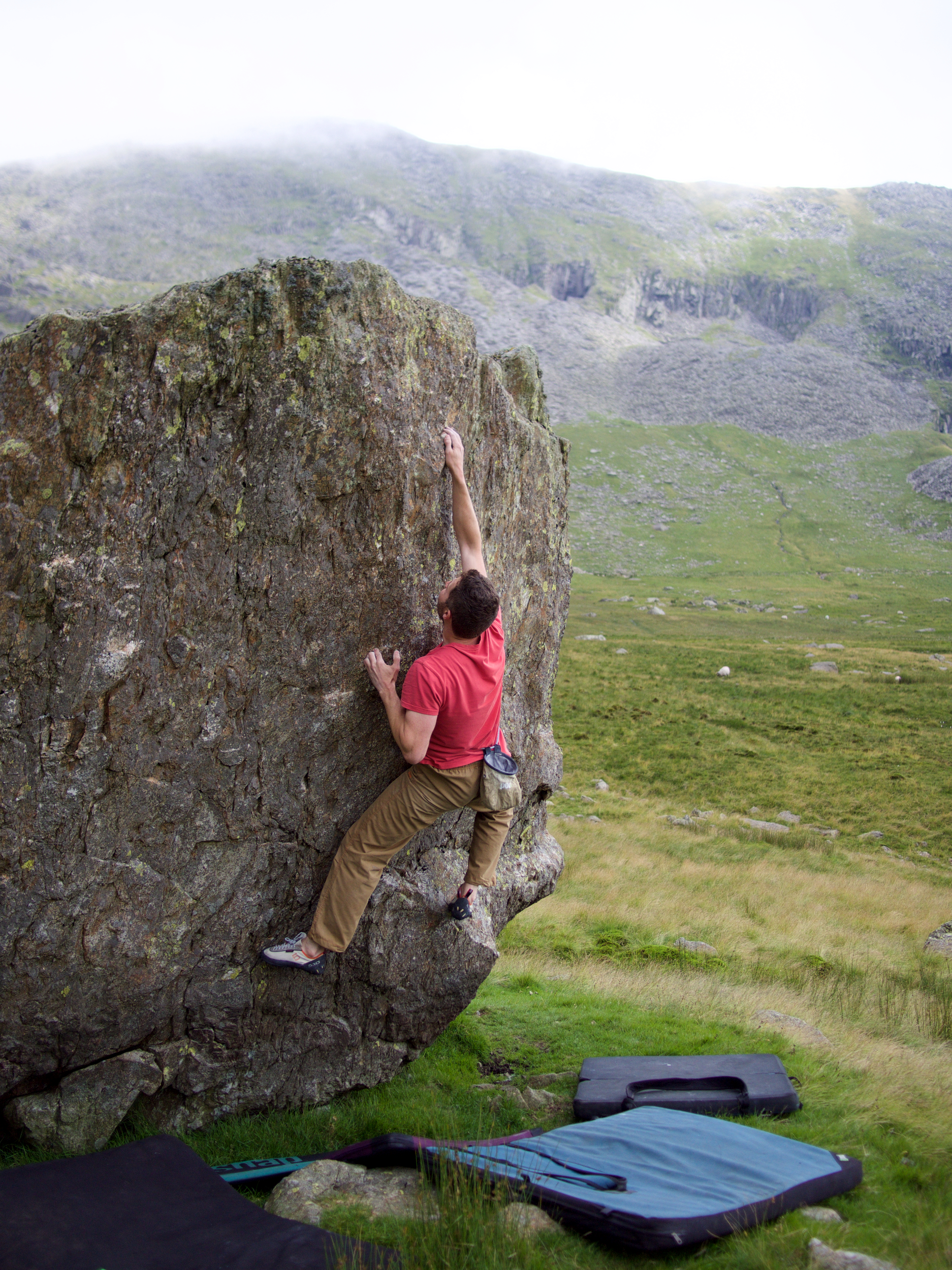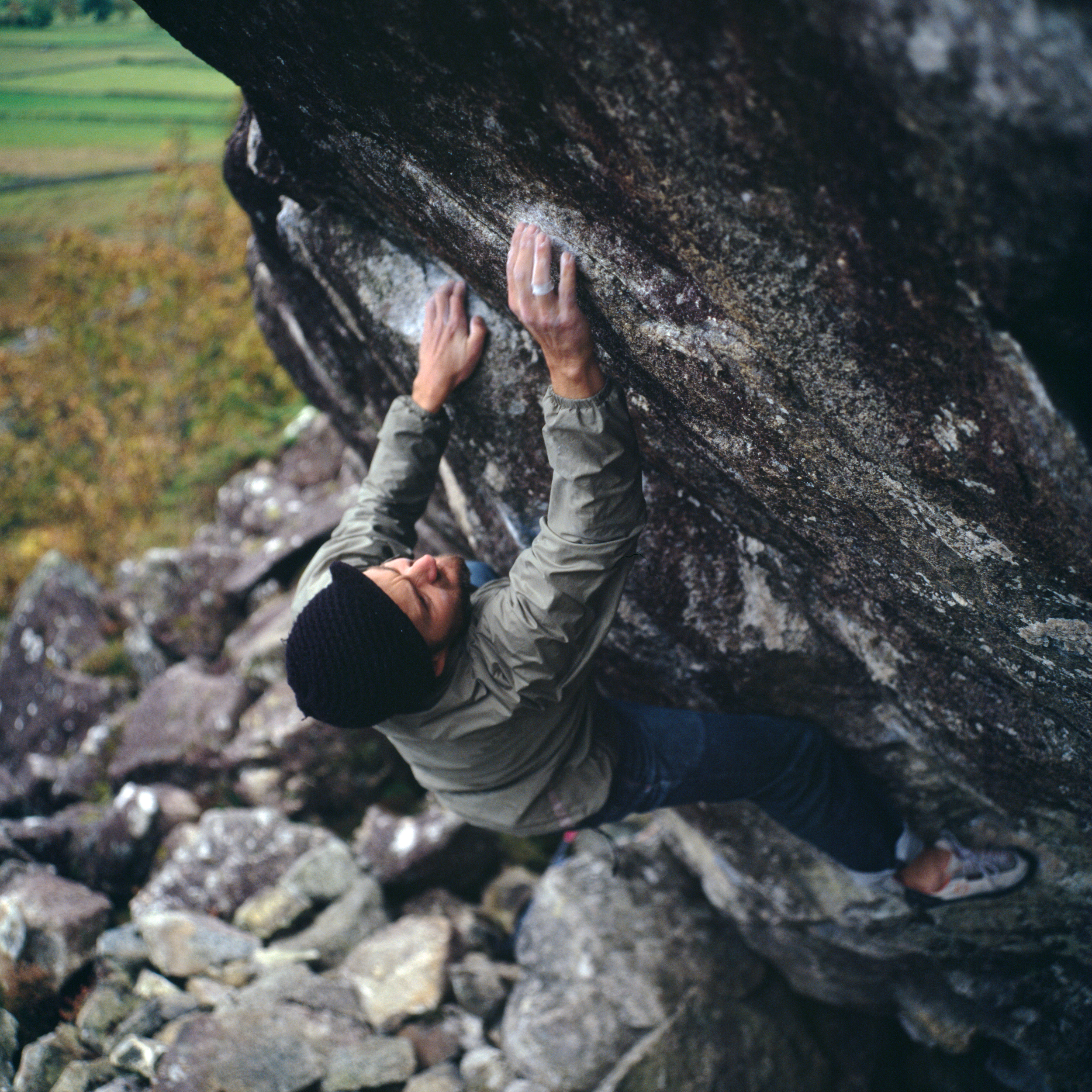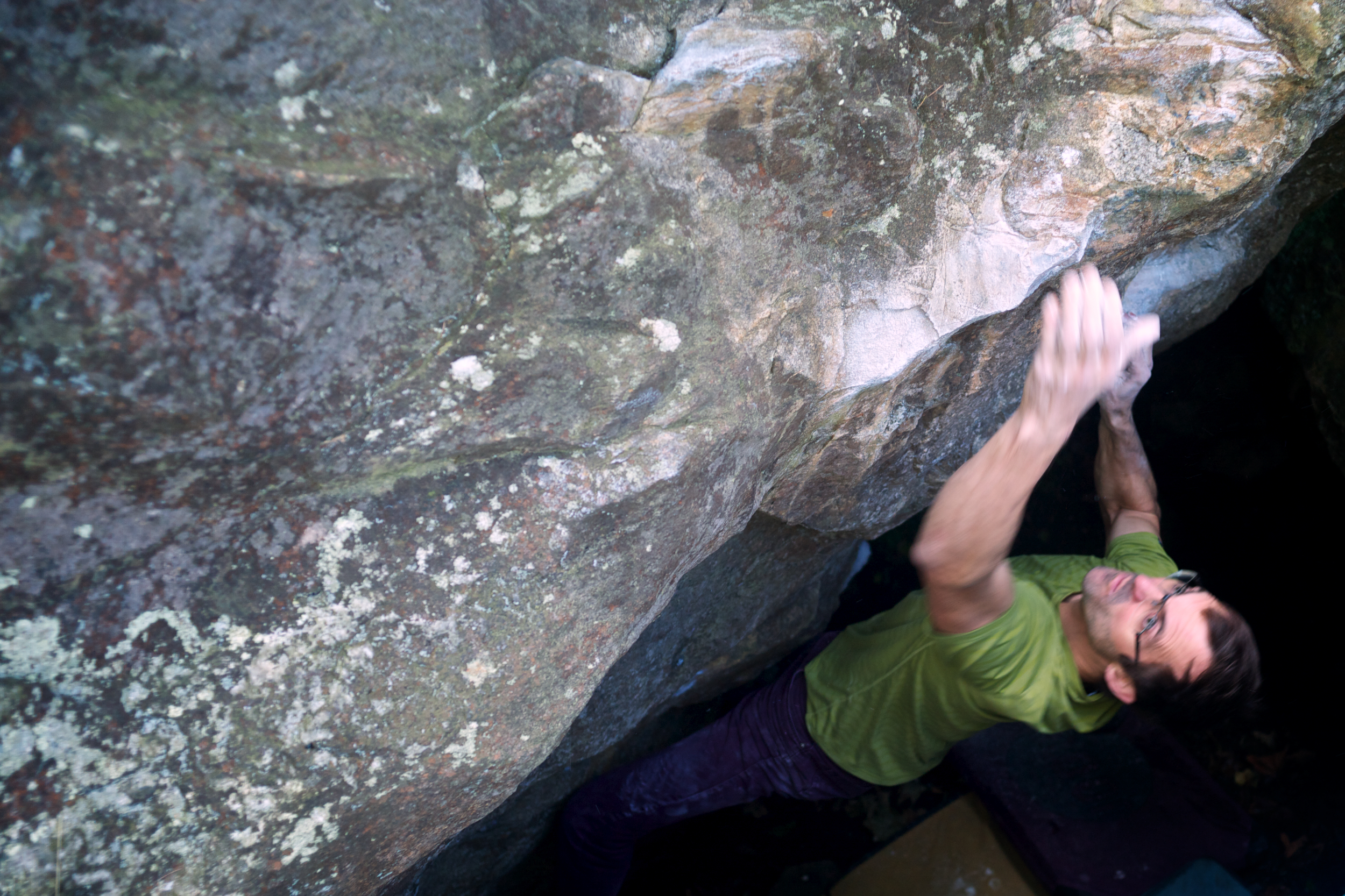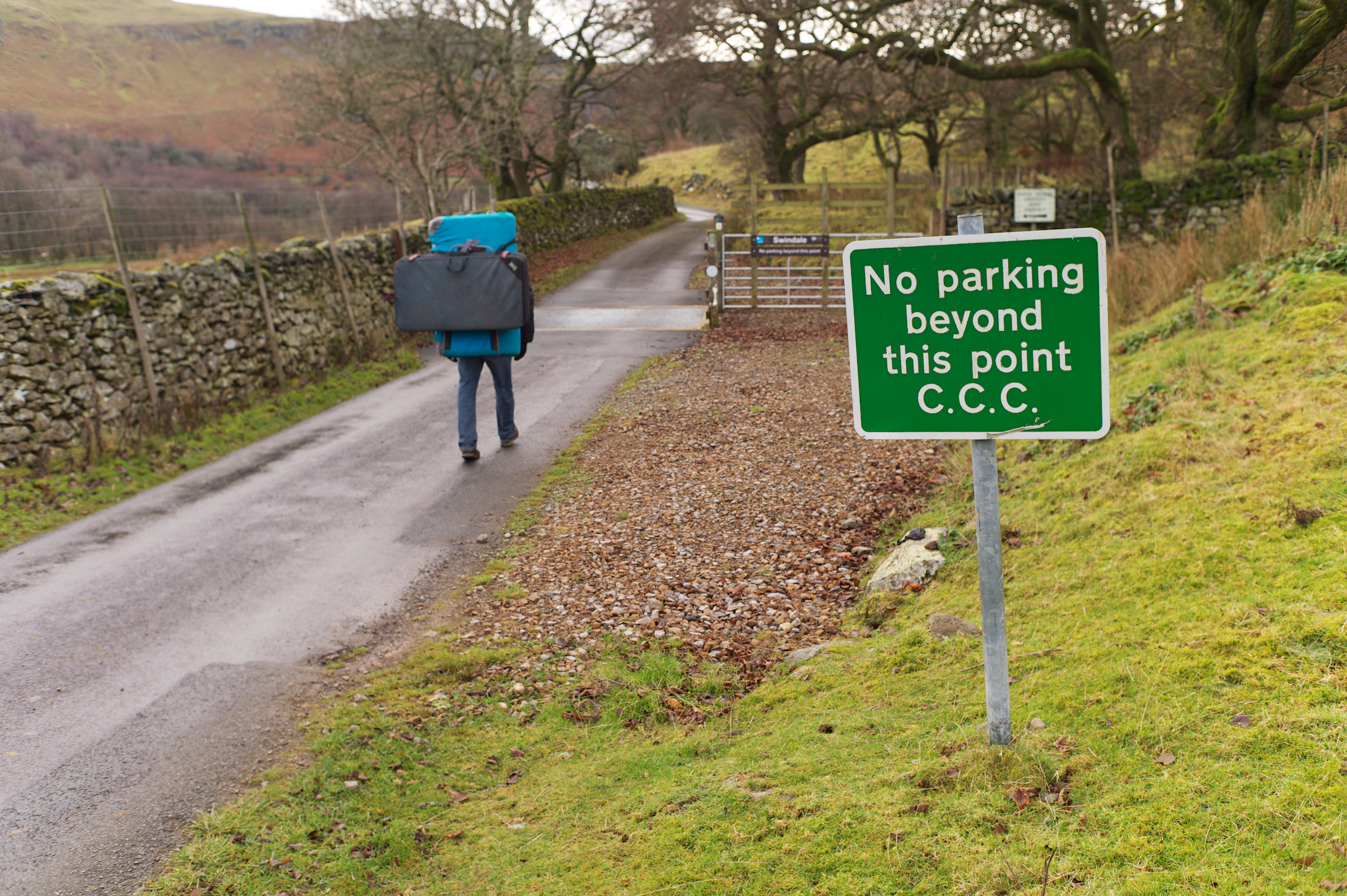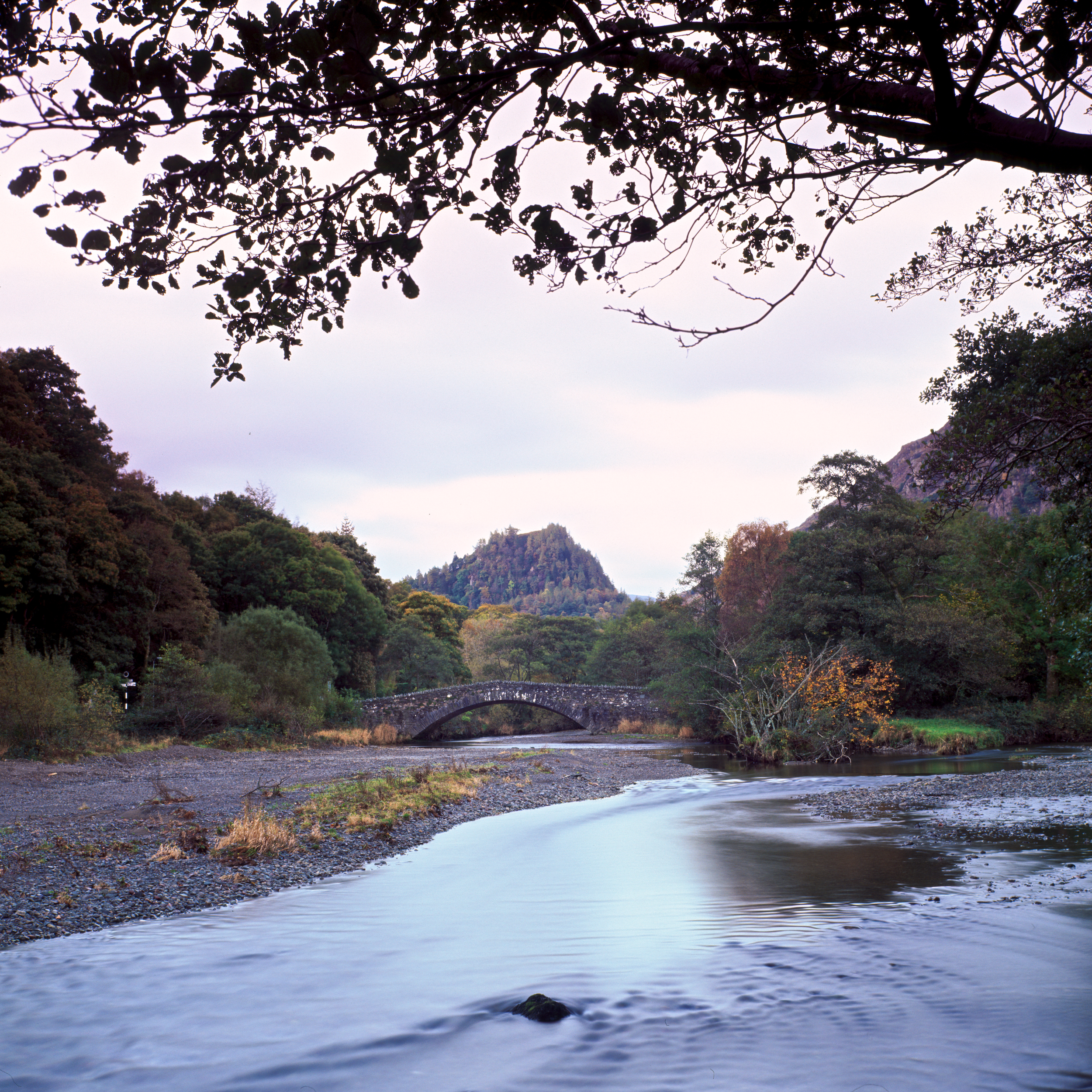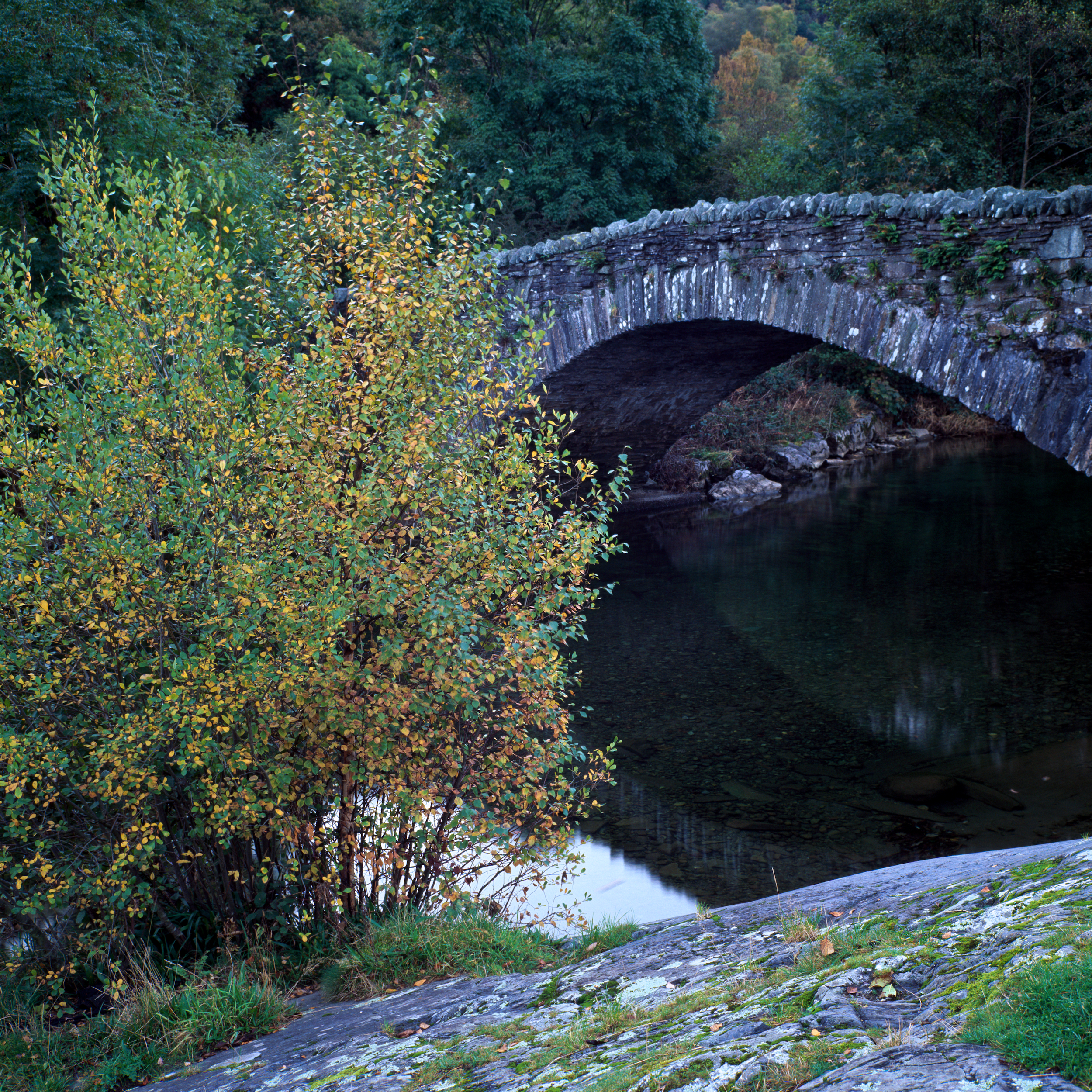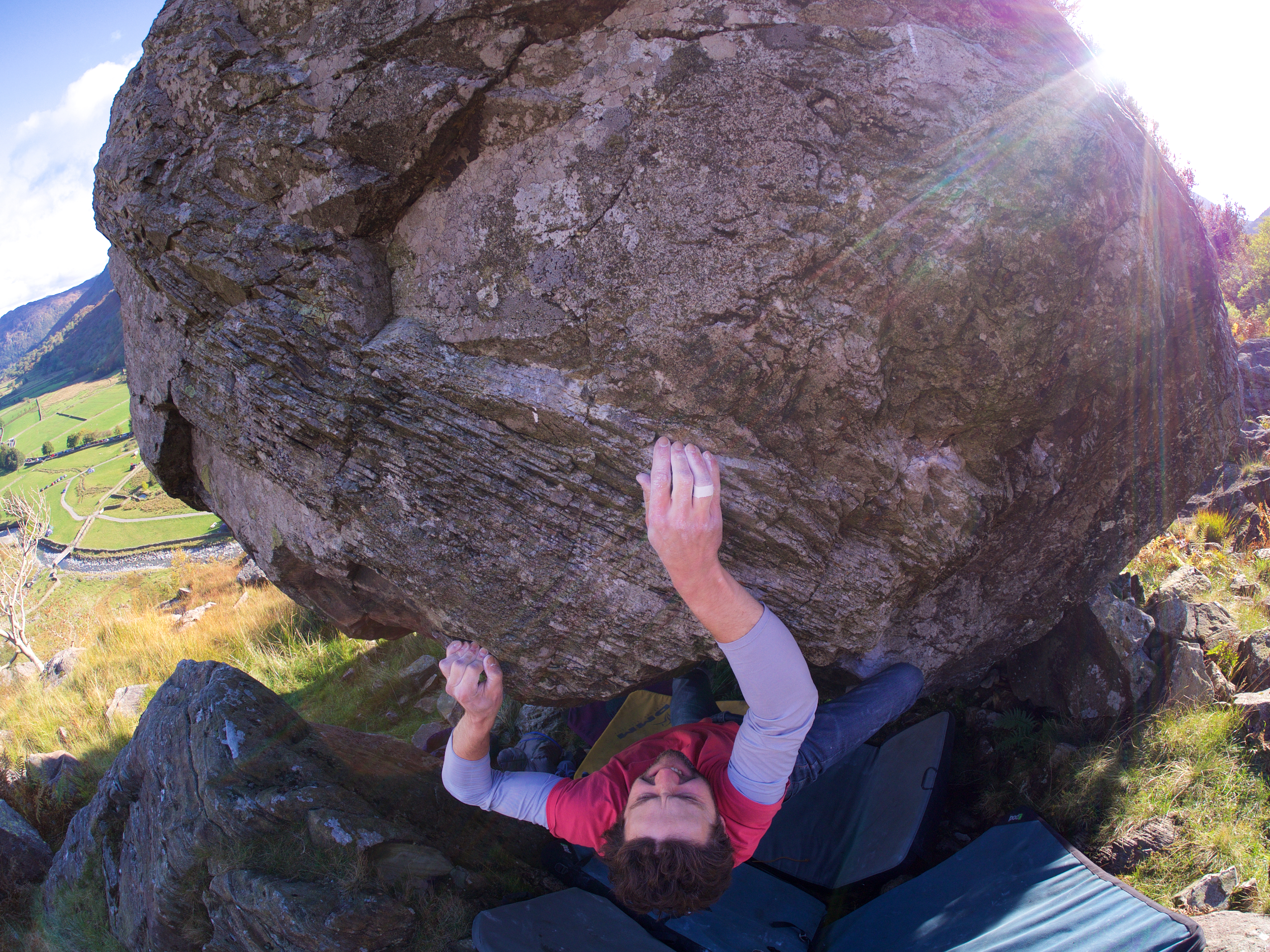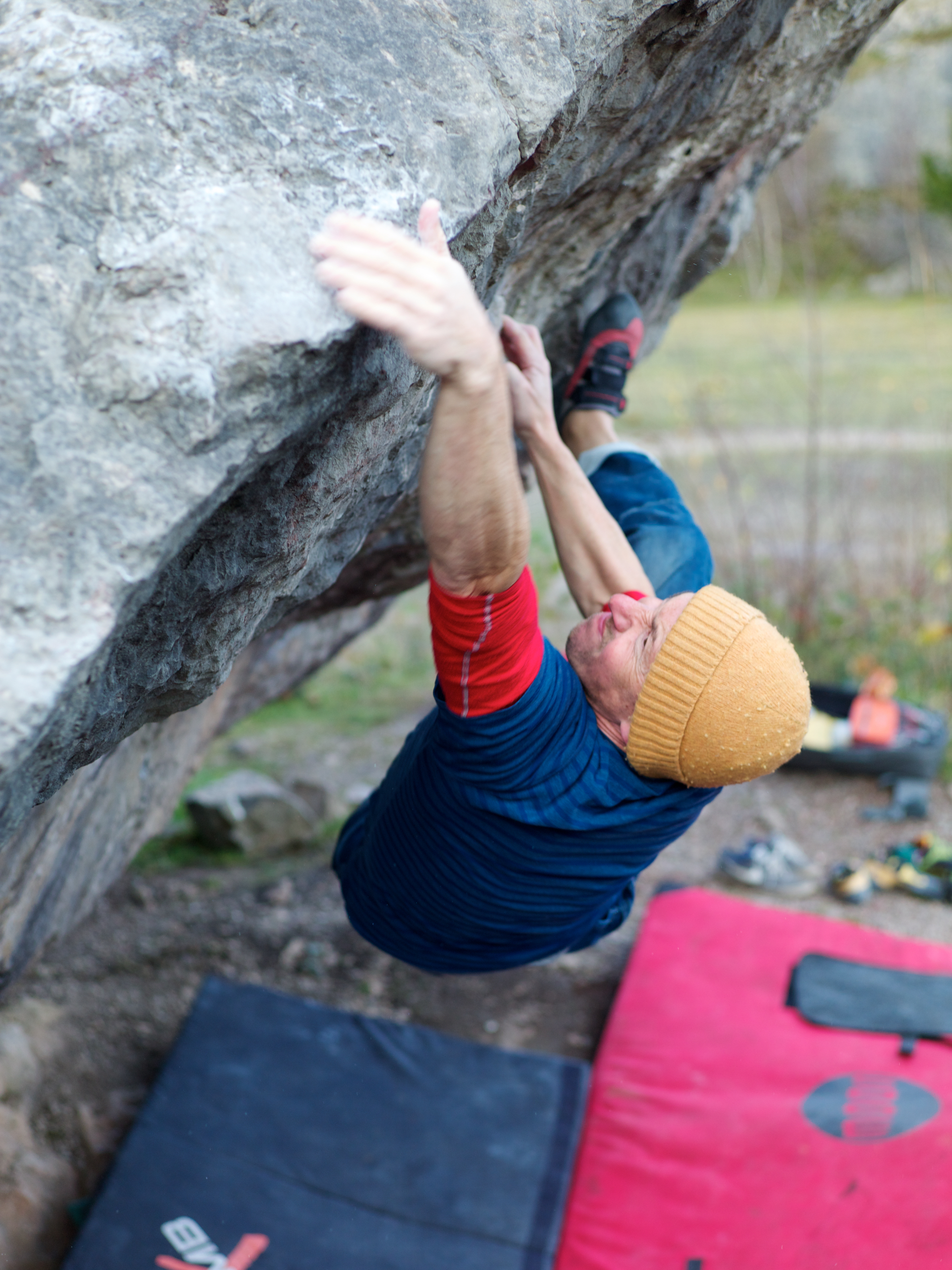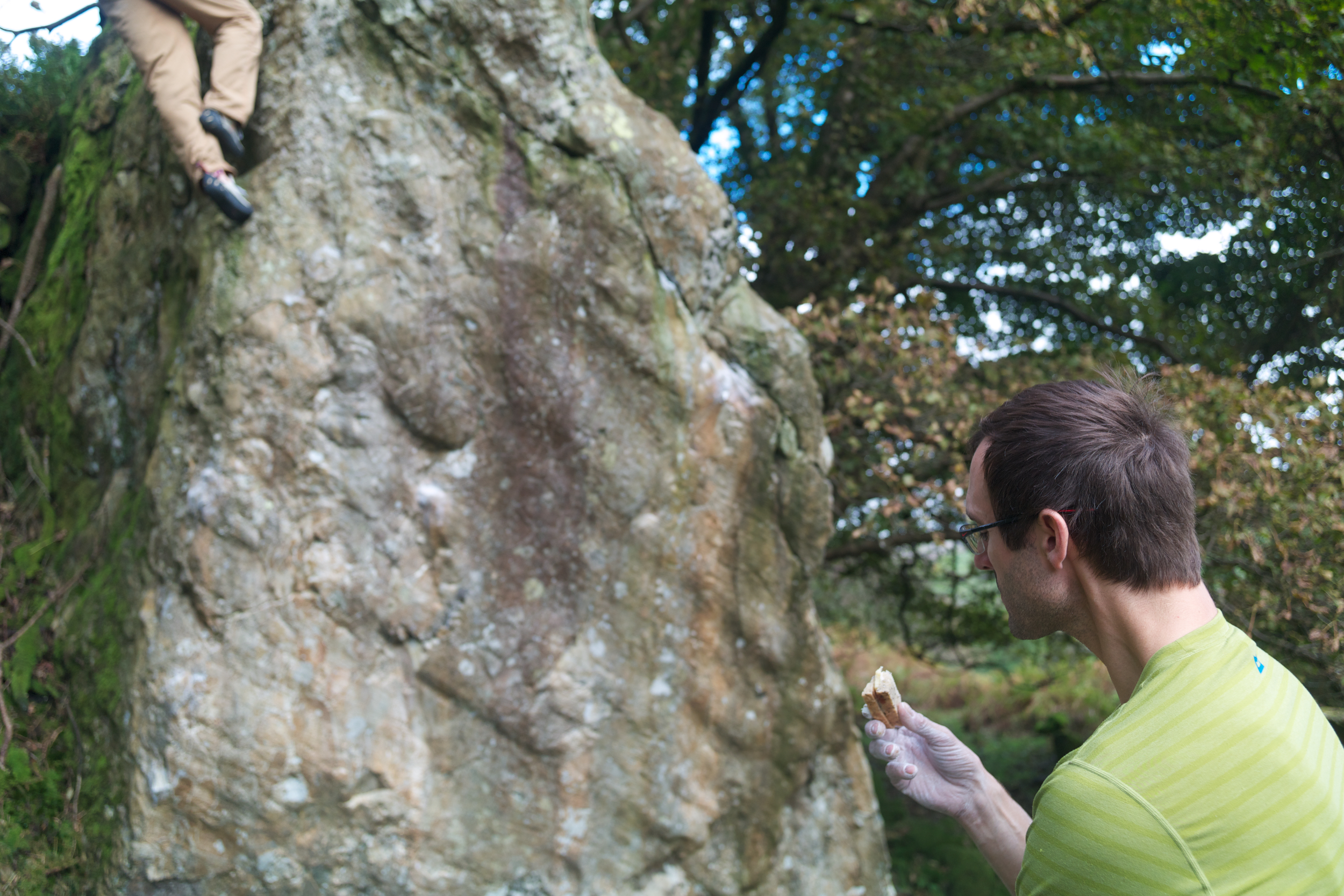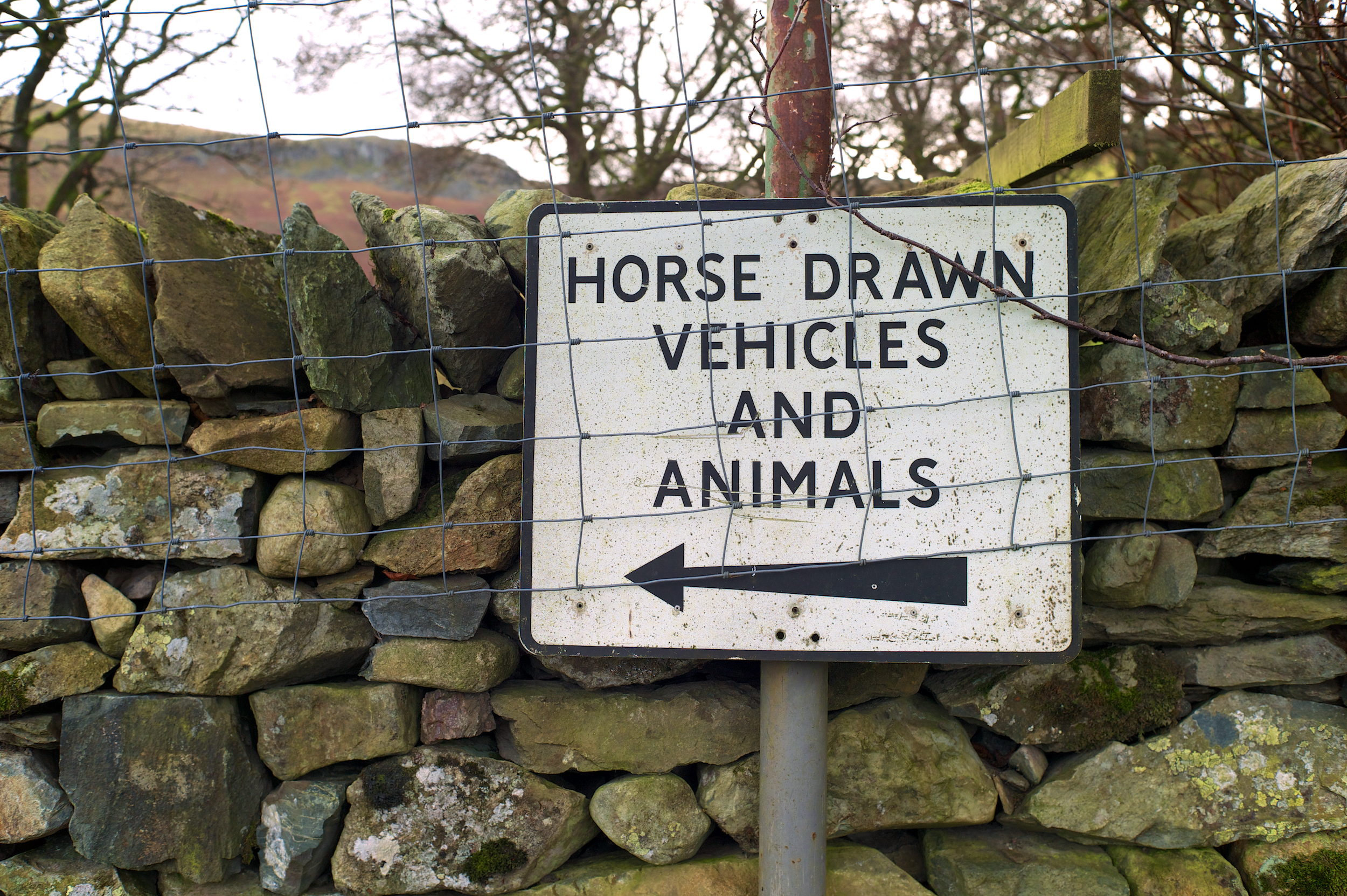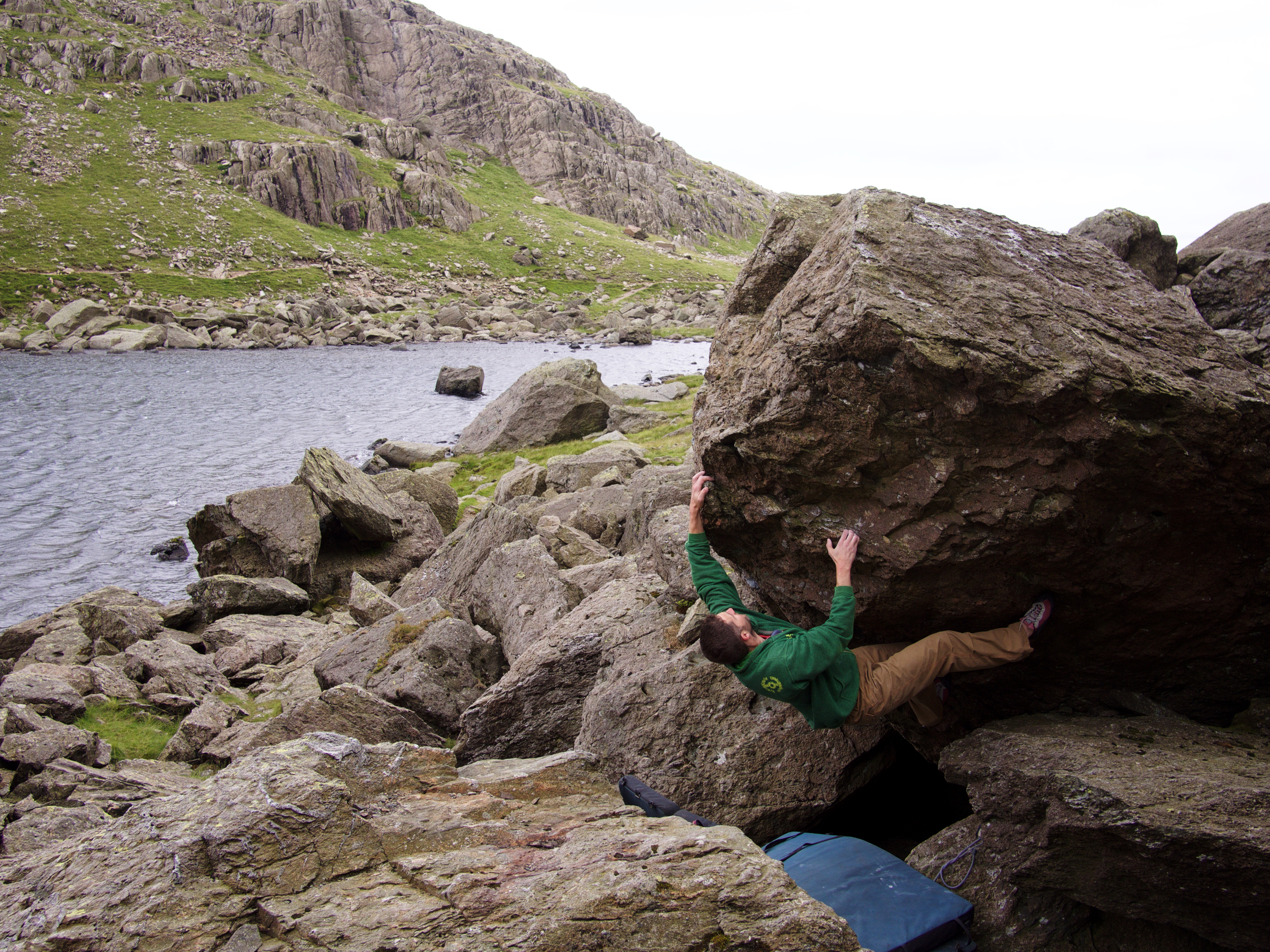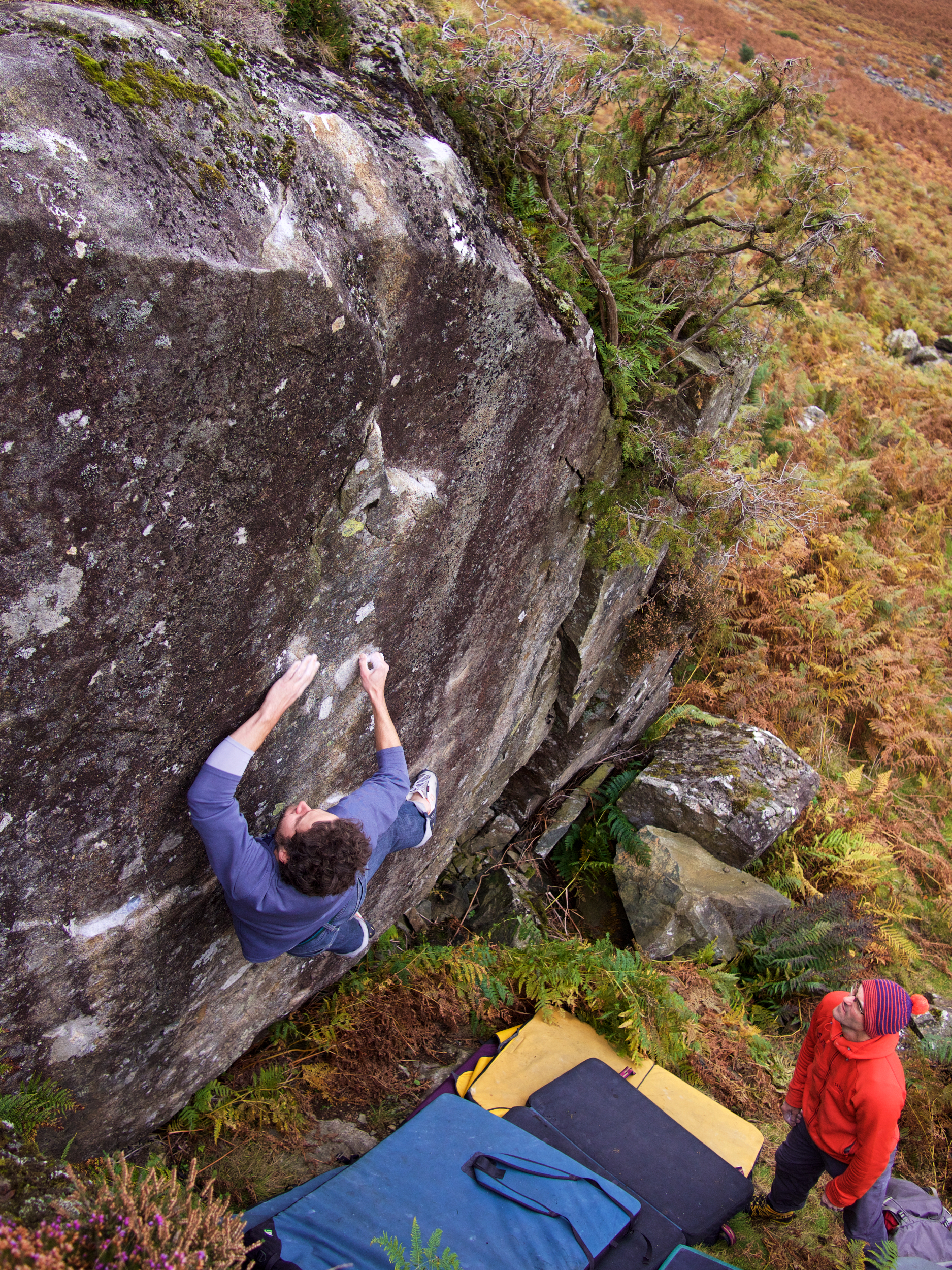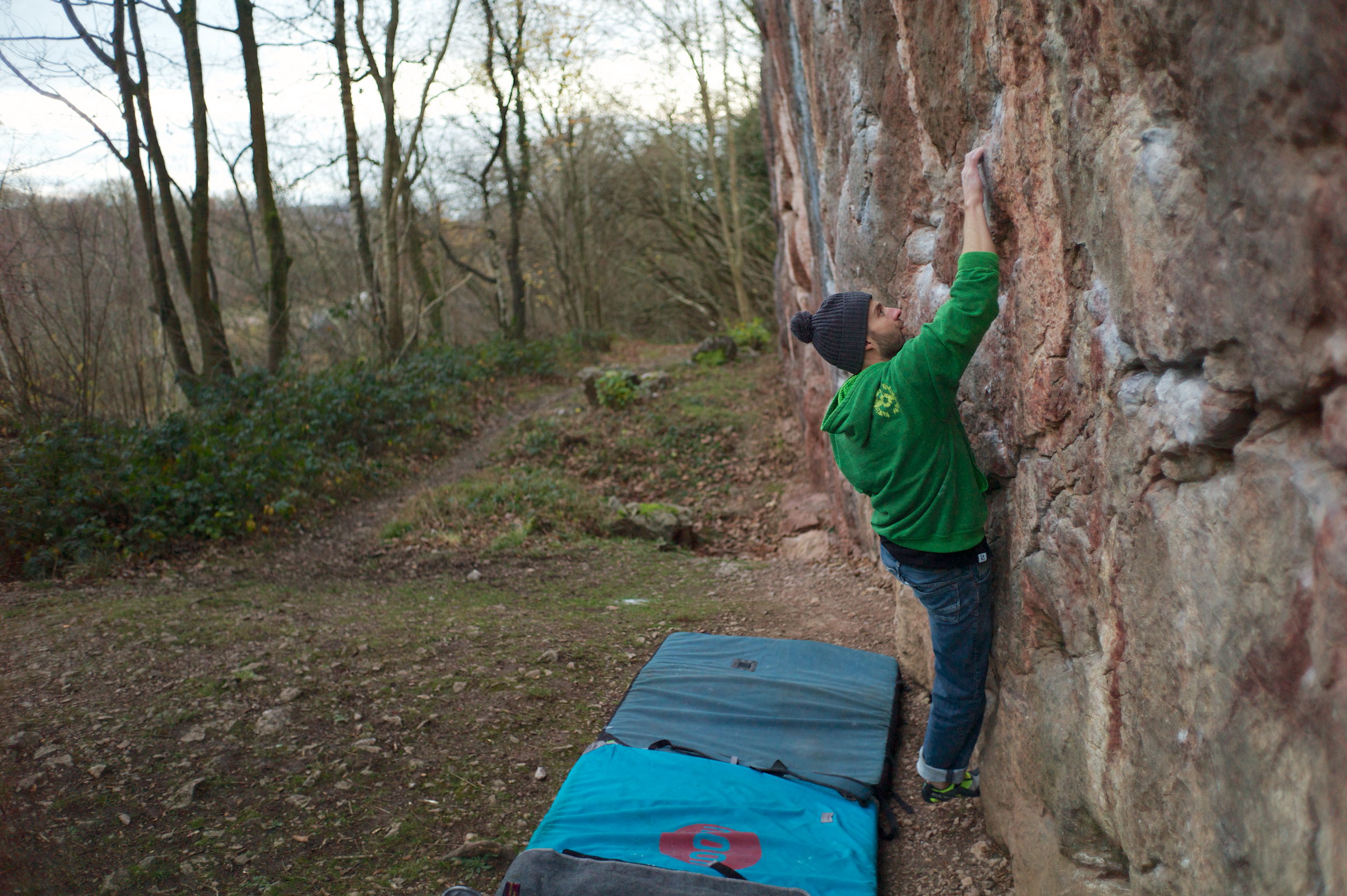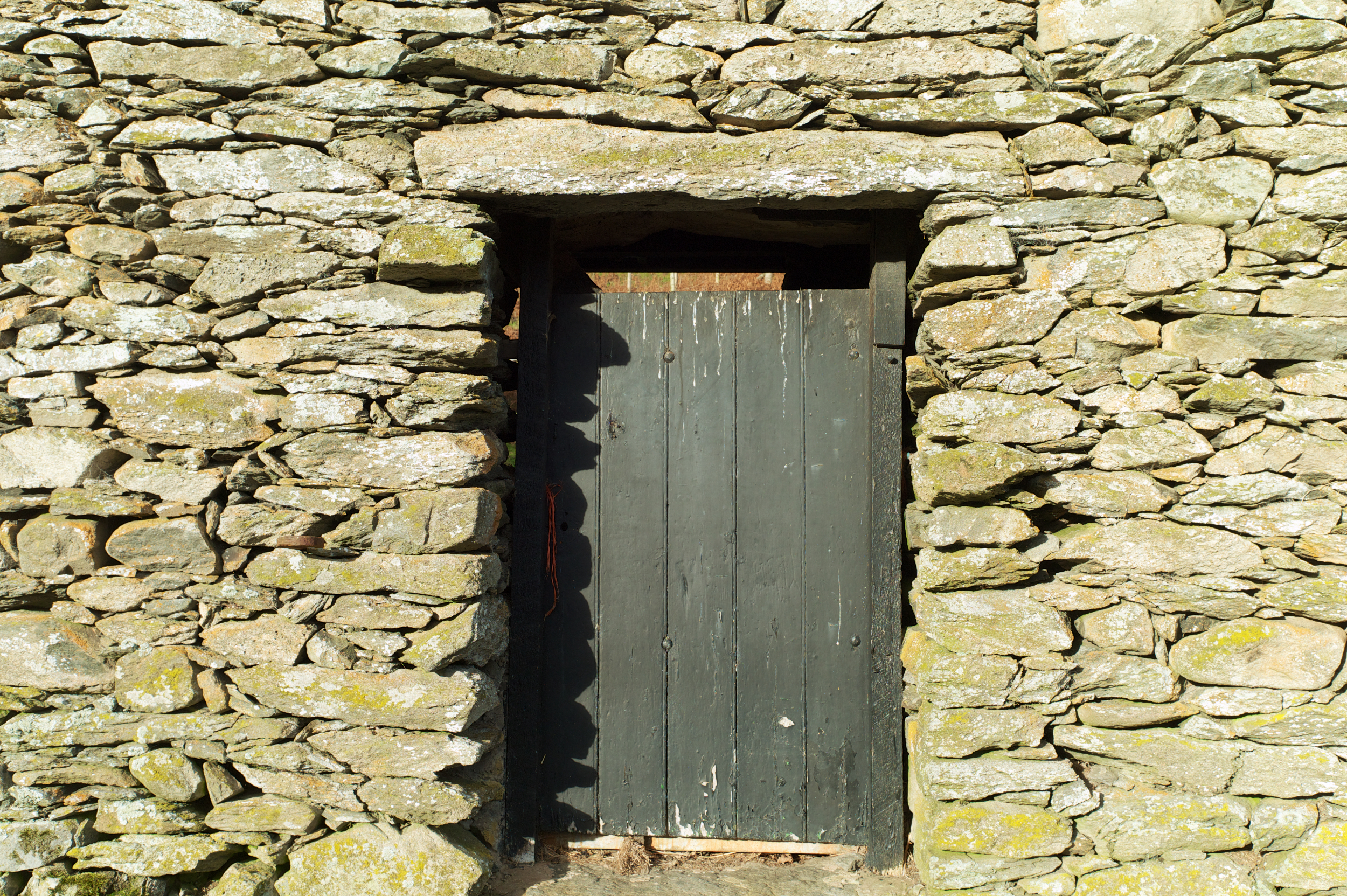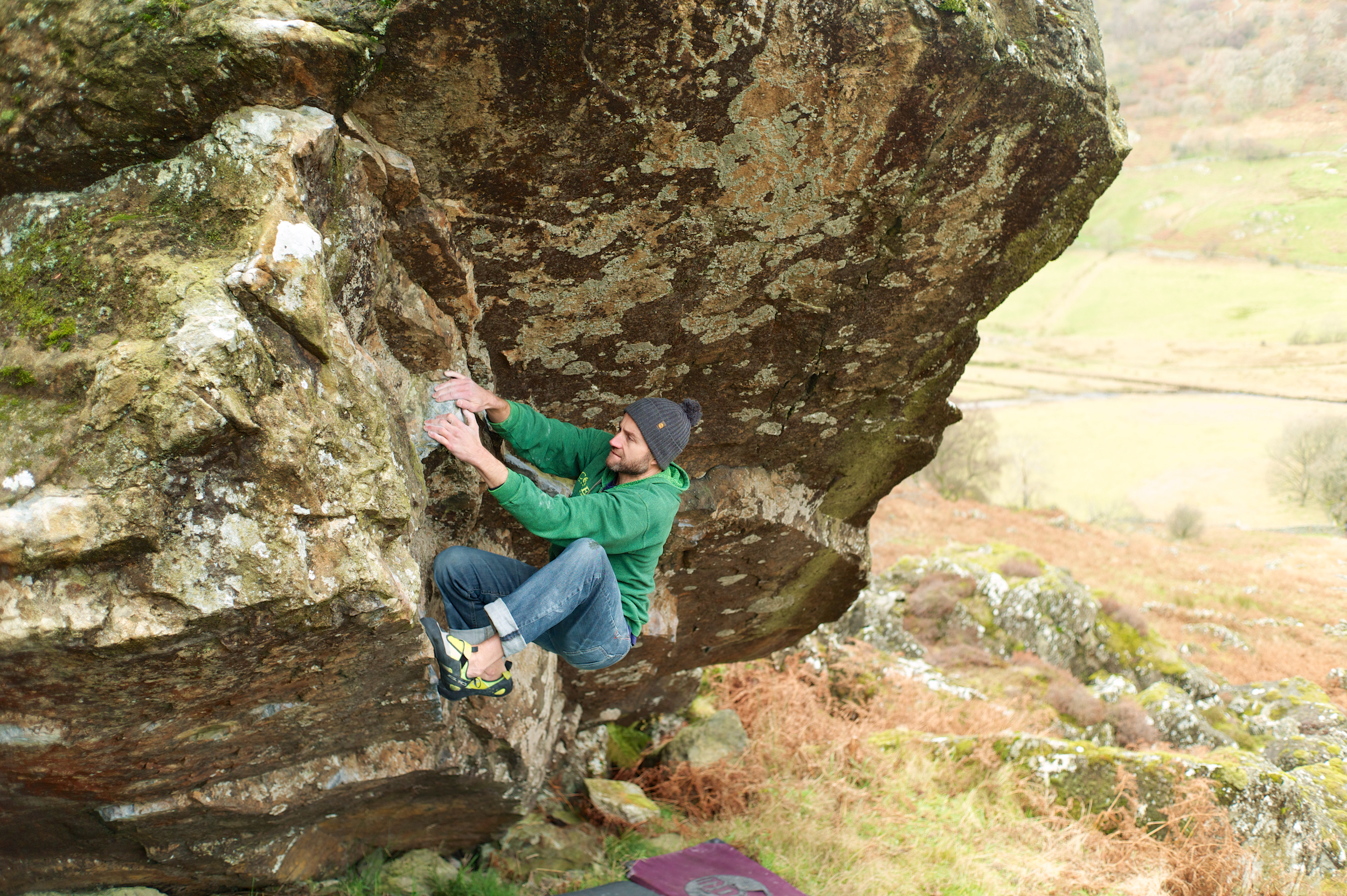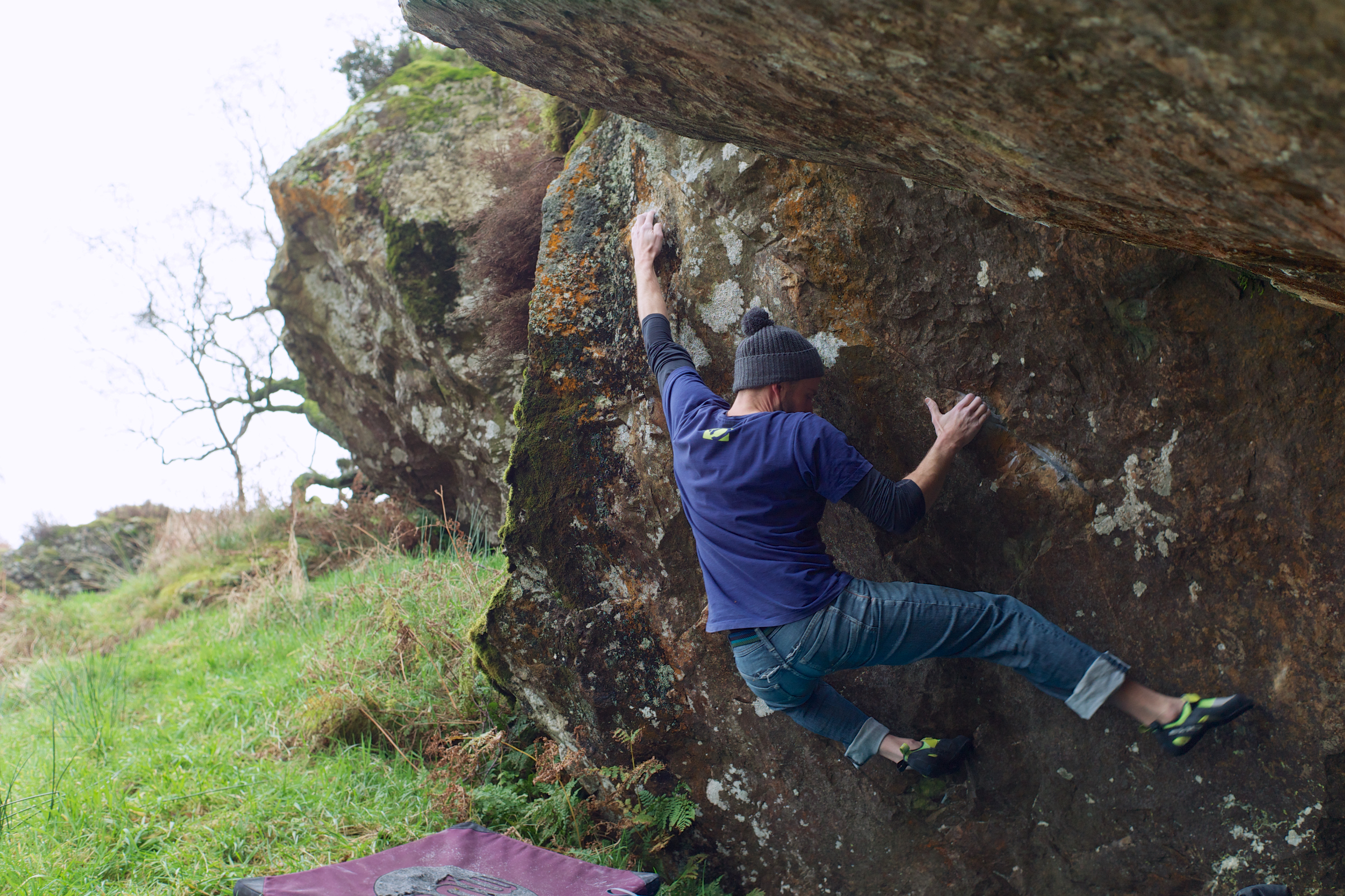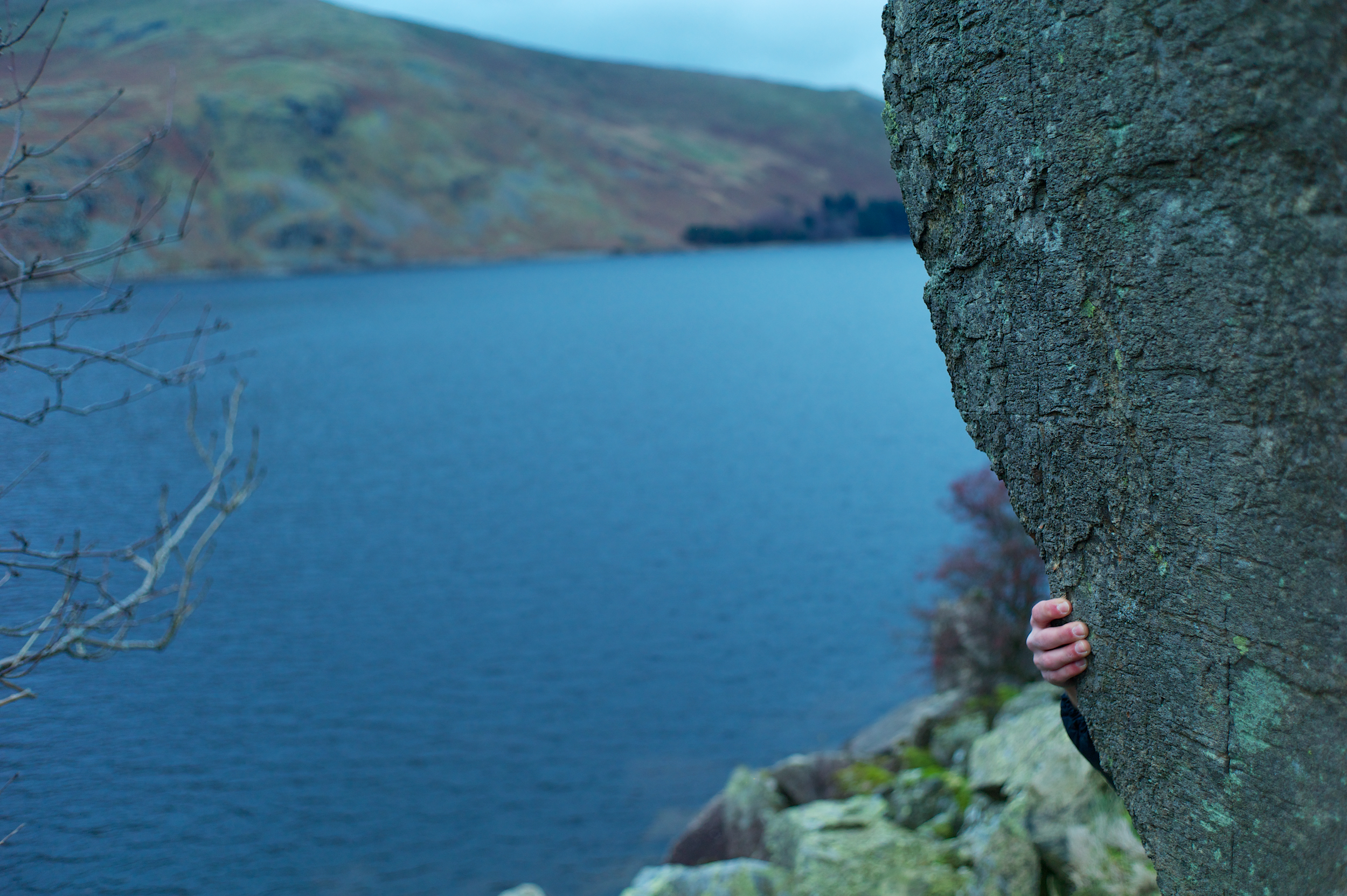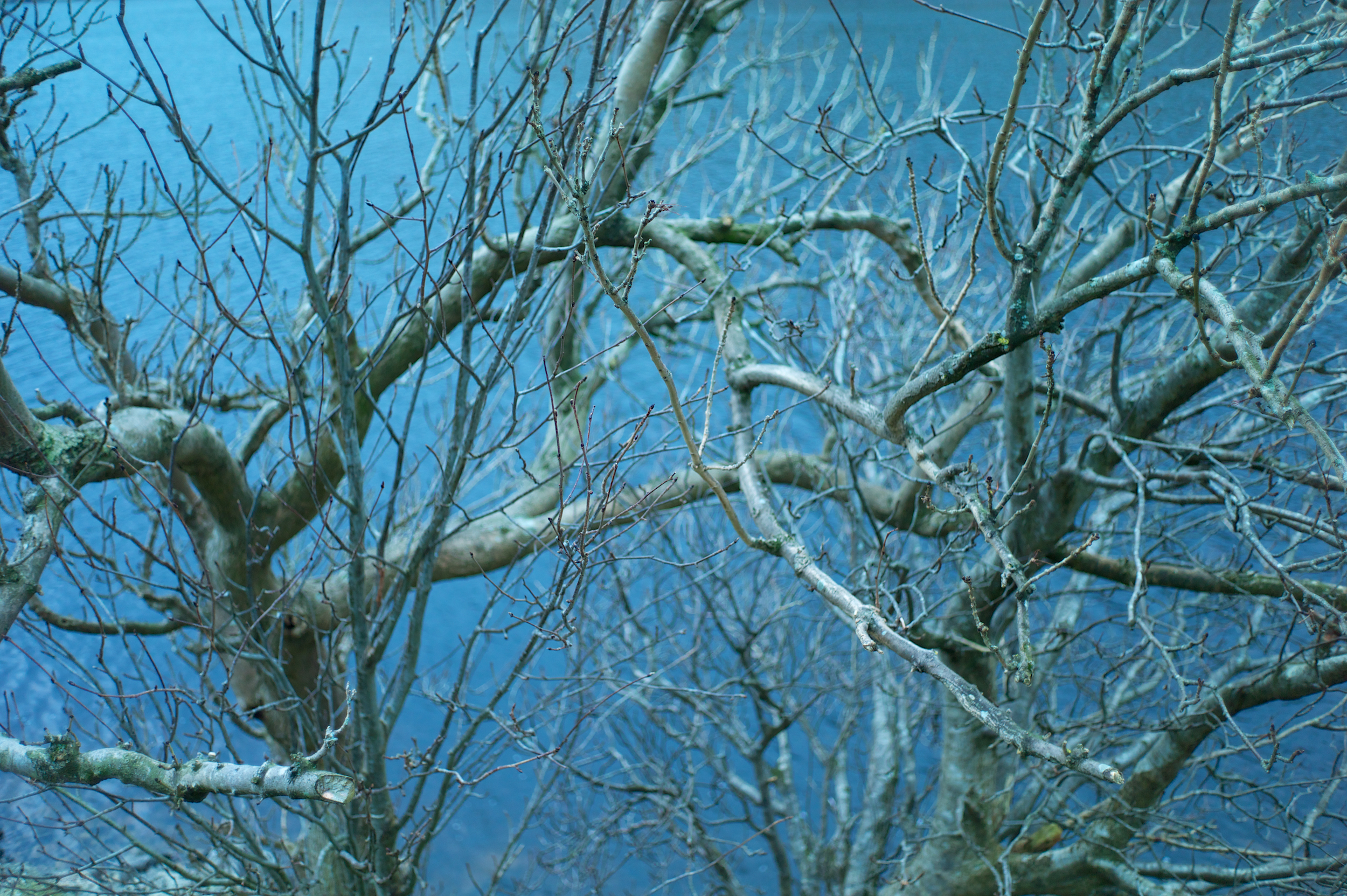Over The Pennines
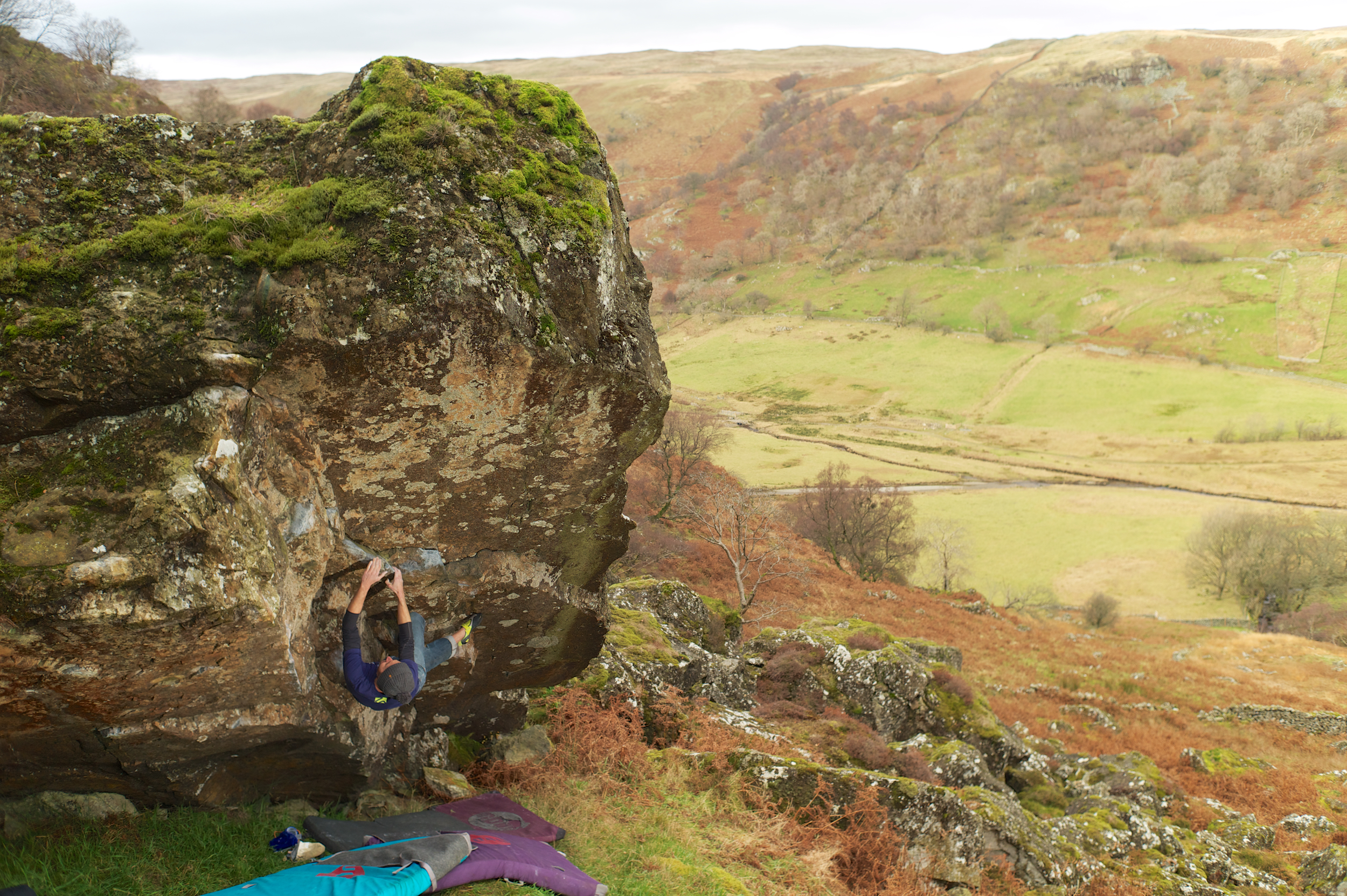
At times, the most difficult part of climbing in Great Britain is making sense of weather forecasts. It is an art in itself to match the most favourable venue to the prevailing team psyche and time available—always at a premium. It's rare that we make the journey over to the Lakes from Sheffield without some element of meteorological jeopardy to negotiate; phones repeatedly checked, decisions made and unmade as each motorway junction is passed. Our turn-off approaches and suddenly we're committed.
One of the joys of bouldering in the Lake District is sampling the range of rock types on offer within a relatively small area. In a way this echoes the character of British climbing in general. Although not all corners of the Lakes are necessarily easily accessible, within two or three hours’ drive from northern towns like Sheffield, Manchester and Leeds, the visiting weekend gritstone climber could find themselves climbing on any number of contrasting rock types—like the fine-grained roadside rock of the Langdale boulders, the granite of Eskdale or the red coastal sandstone of St Bees—and still be back home for work on Monday.
Especially accessible are the South Lakes limestone areas, offering welcome shade in summer at the likes of Woodwell, or shelter from the winds and the chance to catch some winter sun in the limestone nature reserve of Trowbarrow quarry, battling both oldschool vertical problems and more modern steep athletic challenges. The next day could bring a long walk to a sunny mountain venue on a crisp winter day, strained bodies working hard to get warmed up before setting to work on the sharp angular holds which often characterise the steep undersides of mountain boulders. But maybe a swift change in the weather—always a possibility in the mountains—could land us at a totally different venue, perhaps the roadside gabbro of Carrock Fell sheltered from prevailing westerly winds, or as summer approaches we may opt for another long walk to the Dow Crag boulders perched on the flanks of a high mountain tarn, desperate to find some cool air.
The differing rock types are only part of the appeal. Hand in hand with this is the character of the crag environments themselves. The differences are dramatic, and something to be really savoured. Climbers from northern gritstone towns are familiar with crags in rural settings, but the Lakes crags offer a refreshing change from the Pennine crags. Roadside venues, remote mountain crags, tourist hotspots—The Bowderstone springs to mind—and quiet hidden valleys off the beaten track. As time-starved working climbers on a mission it's all too easy to get sucked into pursuing the next project or the grade, and missing part of the experience and making time to just drink in the crag environment a little.
As we drive back home to Sheffield, skirting around the urban sprawl of Manchester and over the Snake Pass back to South Yorkshire, talk inevitably turns to where to head next time. Where have we missed, what unfinished business we need to back for? Thanks to the pace of development, which shows no sign of slowing, the decision will be even more tricky. So many crags, so little time.
Photographer and Author

